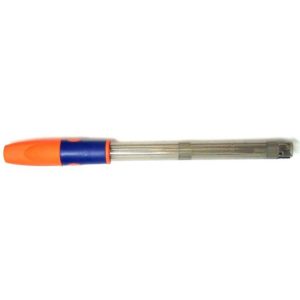Types of pH Meter
Posted in: OEM Sensors
Author: Sentek Ltd
Date Posted: 09/12/2020
It is important to define the difference between a pH meter and pH probe in order to understand their overall functions. A pH meter is an instrument that measures the overall acidity or alkalinity of a liquid or solution. This is measured on the pH meter scale of 0 to 14, with 7 being neutral. Anything below 7 is considered acidic, and conversely above 7 is considered alkaline. A pH probe definition describes the entire measuring component that connects to the meter itself. The probe consists of an electrode, housing unit, and preamplifier with a temperature sensor often included for compensation. The pH element itself is defined as a thin glass membrane permeable by hydrogen ions. Having defined what the pH meter principle is, we should look at the different types of pH meters and how they work.

Types of pH Meter
There are three main types of pH meter available, each with their own applications:
- pH electrodes, also known as pen testers, are the cheapest and easiest to use on the market. The electrode is housed in a glass pen-like container with a tip that is sensitive to hydrogen ions. The small size of the electrode meter means that it can be transported and used anywhere, although it does have limitations compared to heavier grade meters. pH electrodes are often used on the go for testing in construction, hydroponics, food manufacturing and pool maintenance.
- Handheld pH meters are more heavy duty than their pen tester counterparts. These meters consist of a handheld device for display and calibration features as well as an interchangeable electrode probe component. Handheld pH meters are often used in field work by environmental officers and in aquaculture, agriculture and water treatment industries. Many recent models also feature Bluetooth and wireless technology for easy transmission of data to mobile devices.
- Benchtop pH meters are often found in laboratories and professional industries. These are the largest types of meter available and are usually either desk or wall mounted. Benchtop meters provide the highest degree of accuracy when measuring pH levels and are commonly found in food processing facilities, quality assurance, water testing and environmental testing.
Calibrating and Using a pH Meter
Regardless of the types of pH meter used, here are the steps you should take to ensure accurate readings:
- Turn on the meter and allow it to warm up.
- Clean the electrode by rinsing it with distilled water. Avoid contaminating the electrode by touching it or letting it come into contact with other solutions.
- Prepare your buffers for calibrating the meter, pouring each into separate containers and allowing them to reach the same temperature. You should have one neutral buffer of a pH meter scale of 7 and at least one other with a pH close to that of the expected sample. High pH buffers are useful in testing alkaline bases, low pH buffers for acidic solutions.
- Test your pH meter in the neutral buffer to begin calibration.
- Adjust the pH meter value according to the reading from the neutral buffer.
- Rinse the electrode again in distilled water.
- Test your pH meter in the buffer that matches the sample pH level.
- Adjust the pH meter value again according to the reading from the sample pH buffer.
- Rinse and clean the electrode in distilled water.
- Use the meter in the sample and begin testing.
- Measure the pH level on your meter.
- Clean the electrode after use.
Sentek
Since 1991 Sentek have been manufacturing probes, pH electrodes, sensors and other equipment for a range of industries. We have a range of excellent quality pH probes available through our online store, plus we can create custom probes for bespoke applications. To find out more contact our expert team online or via phone. For reliable and superbly designed pH probes, contact Sentek today!
